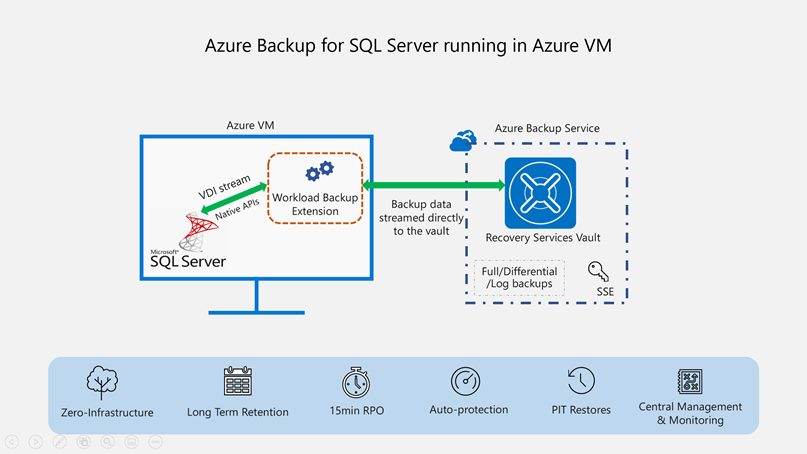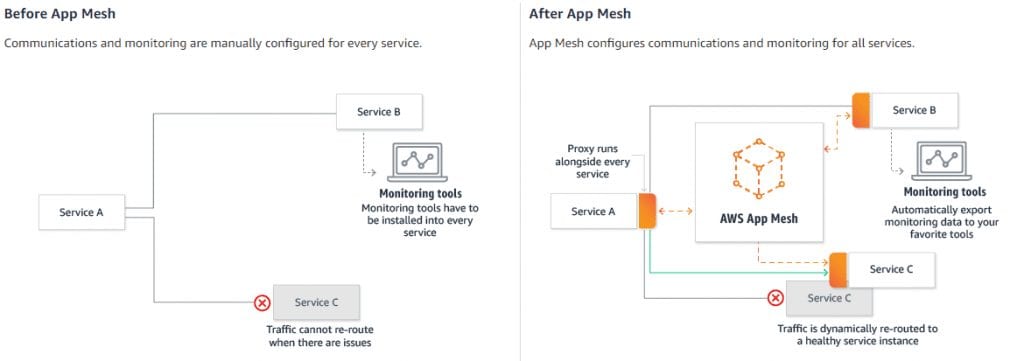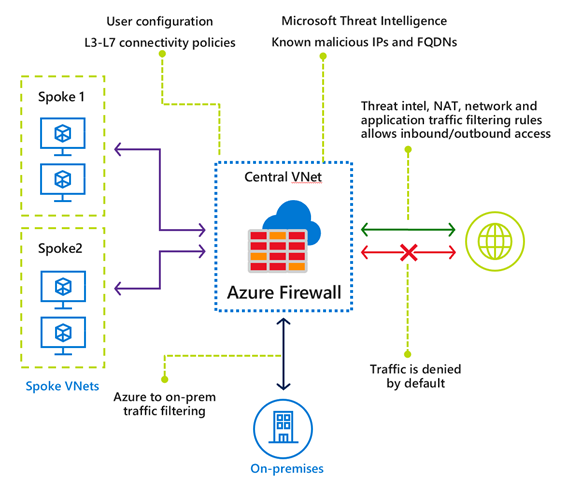MICROSOFT AZURE
INTRODUCING MICROSOFT AZURE SENTINEL
Azure Sentinel has been designed by Microsoft to empower your SecOps team to see security threats clearer and eliminate distractions. The solution provides intelligent security analytics at cloud scale for your entire enterprise by making it easy to collect security data across your hybrid organization from devices, to users, to apps, to servers on any cloud.
Azure Sentinel also promises to:
- Analyse and detect threats quickly with AI on your side
- Investigate and hunt for suspicious activities
- Automate common tasks and threat response

Azure Sentinel Overview. Source: Microsoft.
AZURE STORAGE SUPPORT FOR AZURE AD BASED ACCESS CONTROL GENERALLY AVAILABLE
With the release of Azure Active Directory (AD) based access control enterprises can now grant specific data access permissions to users and service identities from their Azure AD tenant using Azure’s role-based access control. Administrators can then track individual user and service access to data using Storage Analytics logs. The new solution is now available for production use in all Azure cloud environments. More information on Azure AD based access control can be found here.
AZURE DEVOPS SERVER 2019 NOW AVAILABLE
Following the launch of Azure DevOps in September last year, Microsoft have announced the official release of Azure DevOps Server 2019. Previously known as Team Foundation Server (TFS), Azure DevOps Server is a set of collaborative software development tools, hosted on-prem.
Some of the major updates from TFS 2018 to Azure DevOps Server 2019 are:
- Enhanced Azure Pipelines
- Simpler, more cost-effective Azure Artifacts and Release Management licensing
- New, more responsive, navigation
You can download your free Azure DevOps Server 90 day trial here.
AZURE BACKUP FOR SQL SERVER VMS NOW GENERALLY AVAILABLE
Fed up of using backup software or writing elaborate custom scripts every time you want to back up your SQL Servers? With the release of Azure Backup for SQL Server VMs you no longer need to deploy and manage backup infrastructure.
Azure’s enterprise scale, zero-infrastructure solution offers users:
- 15-minute Recovery Point Objective
- One-click, point-in-time restores
- Long-term retention
- Protection for encrypted databases
- Auto-protection
- Central management and monitoring

Source: Microsoft
WELCOME TO AZURE STACK HCI
Microsoft understands that not all their customers are ready to take the leap to Azure Stack, so they’ve unveiled Azure Stack HCI. The hyperconverged infrastructure (HCI) solution is designed for users who want to:
- Replace aging server and storage infrastructure
- Connect virtualised applications to Azure
- Consolidate existing server and storage workloads and reduce datacentre footprint

Key differences between Azure, Azure Stack and Azure Stack HCI. Source: Microsoft
Want more information? Download the Azure Stack HCI datasheet!
NEW AZURE FIREWALL CAPABILITIES ANNOUNCED
Early in March Microsoft announced that they were launching two new key capabilities to Azure Firewall, their cloud native firewall-as-a-service offering that was made generally available back in September last year. The new capabilities are:
- Threat intelligence based filtering
- Service tags filtering
With threat intelligence based filtering users can now configure Azure Firewall to alert and deny traffic to and from known malicious IP addresses and domains in near real-time.
Azure Firewall concept architecture. Source: Microsoft.
Service tags filtering means that Microsoft now supports service tagging for a rich set of Azure services which includes managing the address prefixes encompassed by the service tag, and automatically updating the service tag as addresses change.
MICROSOFT ANNOUNCES GENERAL AVAILABILITY OF AZURE MANAGED DISK SIZES OF UP TO 32 TIB
Last week Azure announced the general availability of larger, more powerful Azure Managed Disk sizes of up to 32 TiB on Premium SSD, Standard SSD, and Standard HDD disk offerings. Using larger disk sizes offers huge benefits such as:
- Reduced VM maintenance costs
- Simplified deployments
- Increased performance
At the moment you can create new Managed Disks or extend your existing disks to larger sizes using the Azure portal, Powershell, or CLI. The newly introduced sizes are generally available in all regions in Azure Public Cloud however it’s worth reminding you that these larger disk sizes are only supported on Managed Disks.
AZURE IS HOT ON THE HEELS OF AWS
According to the RightScale 2019 State of the Cloud Report overall Azure adoption grew from 45% in 2018 to 52% in 2019, narrowing the gap with AWS. As a result, the report said, Azure adoption has now reached 85% of AWS adoption, up from 70% last year. Looks like the race is on between Azure and AWS, and all bets are off!
IN OTHER NEWS:
Microsoft open-sources Azure compression technology
The countdown is on to Global Azure Bootcamp 2019
Azure Data Box family meets customers at the edge
Announcing the general availability of Java Support in Azure Functions
ARE YOU READY TO MODERNISE YOUR DATA PLATFORMS?
Modernising your data platforms can lower costs, increase efficiency and optimise performance.
Chat to us about migrating your outdated SQL Server VMs or Oracle workloads to Azure, or making the move from MongoDB to Cosmos DB!
AMAZON WEB SERVICES
AWS ANNOUNCES LOWEST COST STORAGE IN THE CLOUD
In March AWS announced the general availability of Amazon S3 Glacier Deep Archive. The storage class promises to meet customers’ long-term data retention requirements and eliminate the complexity of managing tape, while ensuring that data is preserved for future analysis. Plus, at just $0.00099 per GB-month, AWS Glacier Deep Archive offers the lowest cost storage in the cloud.
Other key features of the storage class include:
- Retrieval time within 12 hours
- Ideal alternative to magnetic tape libraries
- Designed for durability of 99.999999999% of objects across multiple Availability Zones
AWS APP MESH NOW GENERALLY AVAILABLE
Amazon’s new service mesh provides application-level networking to make it easy for your services to communicate with each other across multiple types of compute infrastructure. AWS App Mesh standardizes how your services communicate, giving you end-to-end visibility and ensuring high-availability for your applications.
AWS App Mesh offers the following benefits to users:
- End-to-end visibility
- Streamline operations
- Ensure high availability
- Enhance any application

How AWS App Mesh works. Source: AWS.
You can use App Mesh with AWS Fargate, Amazon EC2, Amazon ECS, Amazon EKS, and Kubernetes running on AWS, to better run your application at scale.
AWS SIMPLIFIES AI APP DEVELOPMENT WITH DEEP LEARNING CONTAINERS
Quickly set up deep learning environments with optimised, pre-packaged container images. AWS Deep Learning Containers are designed to make it easy to deploy custom machine learning (ML) environments quickly by letting you skip the complicated process of building and optimizing your environments from scratch.
With AWS DL Containers you can:
- Start building immediately
- Get the best performance automatically
- Easily manage machine learning workflows
- Quickly add machine learning to Kubernetes applications
IN OTHER NEWS:
AWS announces new Direct Connect Console
Amazon ECS introduces Enhanced Container Dependency Management
Get CloudStack{d} straight to your inbox
If you enjoyed the latest edition of CloudStack{d} pop your details into the form below and we’ll send you future editions
[123-contact-form i1243466]

Izzi Fuller
Product Marketing Manager
Izzi has worked in marketing for the last five years and currently heads up the N4Stack marketing team. She spends her days buried in SEO, content writing, web editing, campaign strategy, analytics, and anything else that’s thrown her way.
In her spare time you’ll find Izzi with her two dogs, Gatsby and Dexter, lost in a book, or in a different country soaking up the sun and the sights. Find out more about Izzi here.

![CloudStack[d] March Newsletter](https://n4stack.io/wp-content/uploads/2019/03/CloudStackd-March-Newsletter.png)


